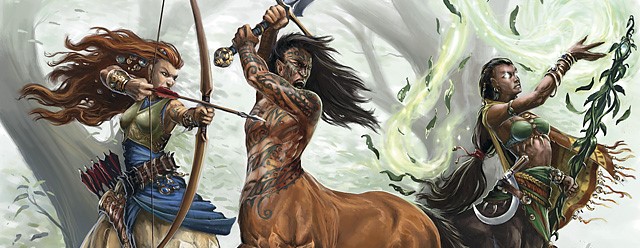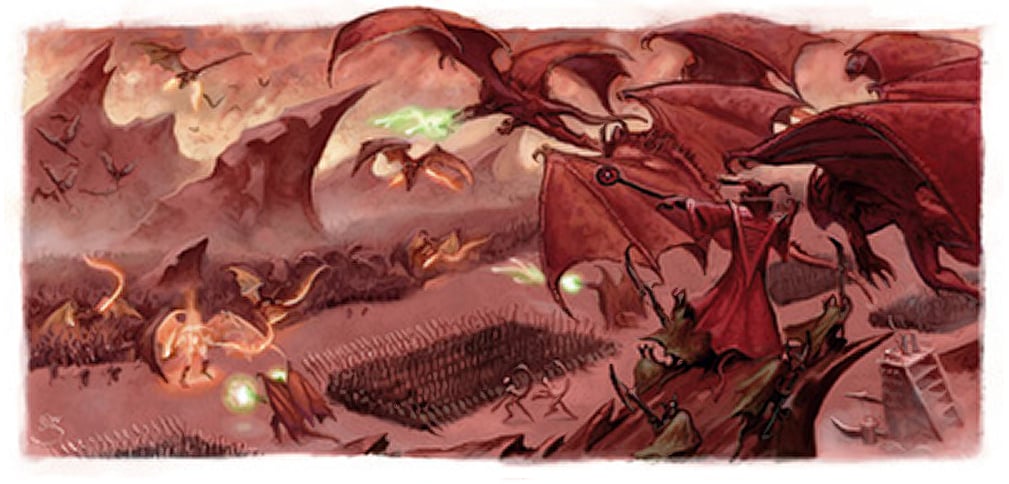D&D: Jeremy Crawford On Centauring Design Mechanics

Jeremy Crawford talks Centaurs on the live Dragon+ broadcast. Get an extra helping of equine explanation, and take a look at what goes into making a player character option.
It’s not that often that you get to peek behind the screen at what goes into making a character race work–but that’s exactly what we’ve got today. Jeremy Crawford, Lead Rules designer for Dungeons and Dragons sat down for the Dragon+ stream yesterday to talk about Centaurs and answer your questions.
Now you can watch the whole thing to go through the race step by step, but there are a few interesting concepts that kind of emerged from the discussion. The first one has to do with player perception–one of the biggest sticking points about Centaurs is their size. Because Centaurs in the Monster Manual are large, players have this perception that Centaurs should be large.
But that doesn’t always track–one of the things Crawford kept talking about was how the game isn’t designed with that symmetry in mind. The way monsters work is similar to–but still distinct from the way players do. He mentioned an as-yet-unannounced book that featured a monster with abilities that mimic a Rogue, which was cut due to its ‘complexity’ — it’s okay for a player character to deal with fiddly abilities, but monsters are, in general, streamlined to accomplish their job.
But this sword cuts both ways too. Crawford mentioned that when pulling a monster over to be playable as a PC option, a lot of the playtesting hiccups happen when they’ve tried to pull a monster ability over into a player option. Oftentimes it’s pulling over an iconic ability that has to ultimately get stripped, or rewritten.
And even then, Player Perception matters a lot. When talking about the Centaur’s Charge ability, Crawford talked about how players will get stuck on the idea/reality behind a mechanic, depending on the ability’s lore. If an ability recharges on a short or long rest, if it’s magical, players have no problem accepting that limitation if it’s magical or supernatural–but if it’s a physical ability, something that feels just innate (like the Centaur’s charge) then there’s pushback, because it doesn’t make sense.
Which is an interesting notion for rules. They should make sense, but there are so many different ways for a rule to “make sense.” There’s the truth of what it’s representing, does it make sense for this rule to work this way to reasonably abstract this real (or made up) thing. There’s the internal consistency, other rules like this work a certain way, does this one as well? And there’s the mechanical sense, sort of, is this rule balanced and not too powerful or too weak compared to similar things. And that’s just for a start. Once you start drawing lines, you have to be very deliberate about where you do.
But there’s an easy way to fix that–make the ability based off of an ability score modifier. Or rewrite it so it’s usable a little more often. Players want that narrative connection to their character, even if they don’t quite know what that looks like.
One last thing–we got to see an example of a rule done poorly. Crawford talked about the part of the Equine Build rule that says a medium creature can ride on you if you’re a centaur, saying that it was not obvious enough to the reader that this tweaks the mounted combat rules. It assumes that you know what mounted combat means–because it has a very specific meaning in 5th Edition.
At any rate, that’s a quick peak behind the curtain of player options in 5th Edition. Hope you enjoyed, and of course, for more 5th Edition freneticness, tune in Friday for the Stream of Many Eyes, where the next D&D storyline will be announced.
What do you think about these rules, do they hit the mark, or are they off-centaur?





